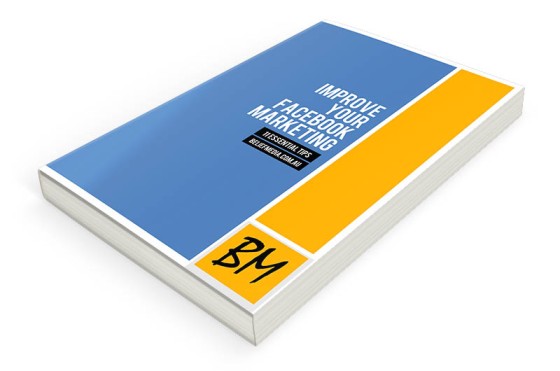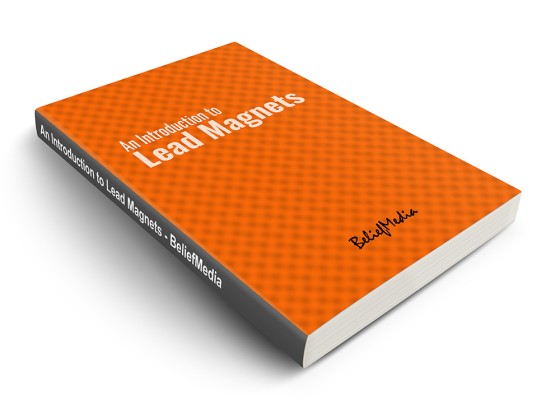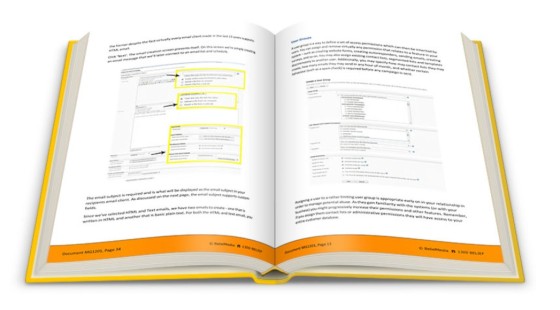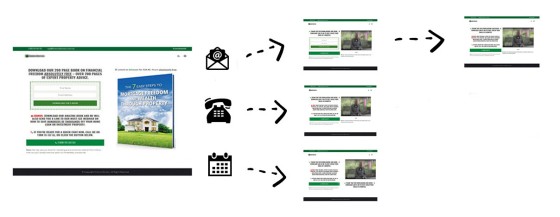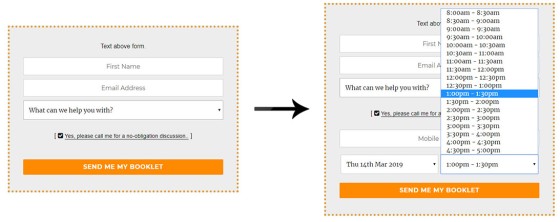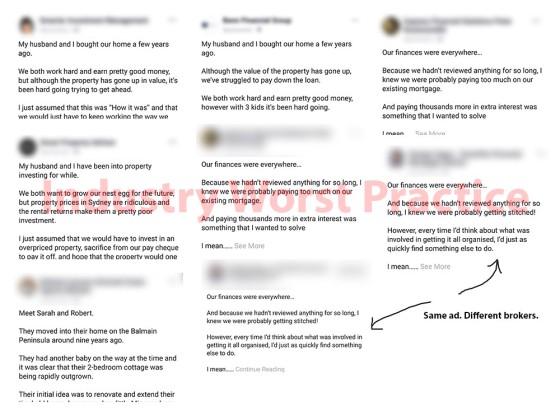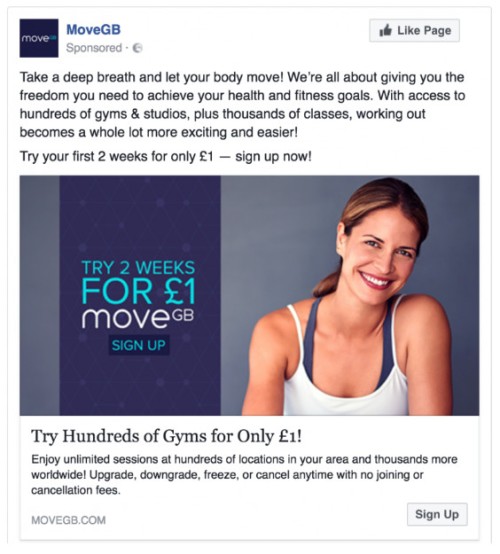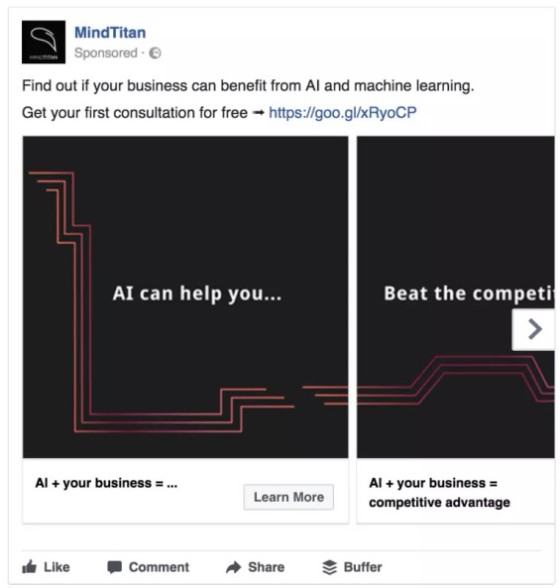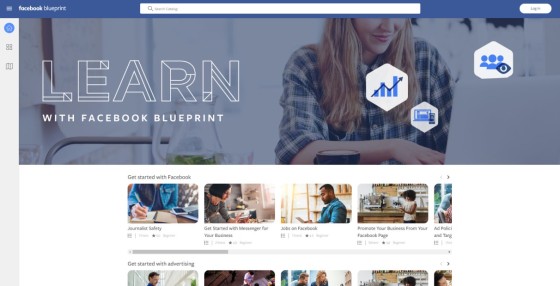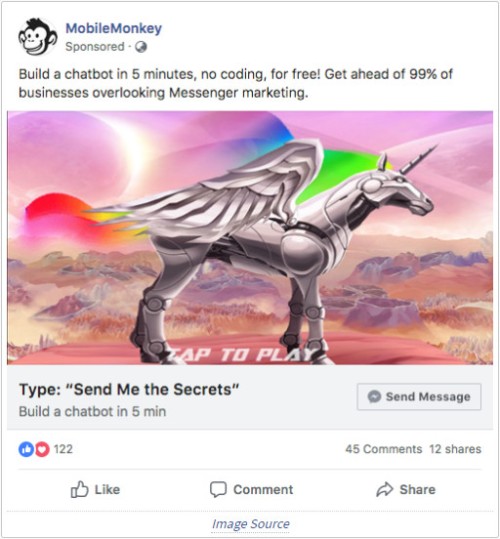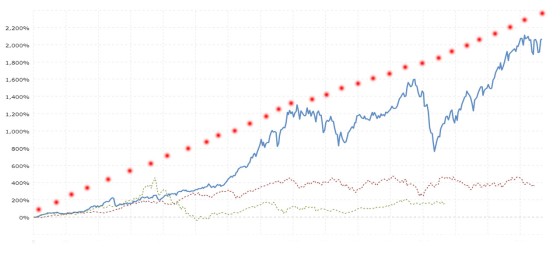If there’s any one secret to business success, hundreds of millions in turnover derived from our online campaigns tells us that it's those businesses that cleverly craft compelling online marketing campaigns that tend to prevail over all overs. In a world where small businesses fail far more often than they succeed, the one common denominator that successful businesses have is that they all have a strategic web, social, and advertising program in place to deliver a stream of high-quality 'leads' to supplement offline programs.
While this article deals with concepts as they relate to Facebook, the principles are portable, and they represent just one small piece of the marketing matrix necessary to saturate, engage, and connect with a broad market.
Note; Yabber's powerful Facebook systems are introduced in an article titled "Why Our Integrated Facebook Advertising and Audience Management Will Improve Your Conversions".
Pictured: Snippets of this article were sourced from a very general book we previously provide clients on day 17 (as MG1701). It introduces broad and basic Facebook advertising concepts. Parts of the same content is available in our Mortgage Broker Marketing Manual. The short article doesn't take appropriate science, psychology, or persuasive technology into account.
Many have tried online advertising programs in the past without success. Others have enlisted the services of a 'marketing agency' - often nothing other than weekend-educated individuals with a Facebook account – and these charlatans have also failed to deliver upon what is usually promoted with high expectations. Don't let these adverse experiences dissuade you from the powerful realities of modern marketing. The simple truth is this: online advertising works. It doesn't matter what market you're in or what product you have to sell, a highly fashioned campaign will continue to provide you with the base of clientele you need to succeed and grow.
Through Facebook's retargeting, lookalike audiences, and other tools, it's never been easier to capture the attention of your target market. Capitalising on the idea that 3% of any market is ready to "buy now" (this small 3% is often – but certainly not always – also suited for use with Google AdWords), and knowing that an additional 7% of any group (on average) are open to a purchase, and given that Facebook has roughly 2.2 billion active monthly users (15 million in Australia), it makes it the ideal advertising and marketing platform. As discussed shortly, if you know what your ideal customer looks like, and you put appropriate targeting strategies in place, you can ruthlessly target specific segments of the platform that are considering the product and/or service you provide to ensure profitable returns.
It's the predictability of Facebook and consistent returns that has made it the platform of choice for most marketing agencies. Through the business tools the Facebook platform makes available, it's easy to monitor, split-test, evaluate, and alter your campaigns. Because the costs of using Facebook are quite low when compared against other platforms, it allows you to ease your way into a campaign and increase your marketing spend only if your efforts see some success.
Keep in mind that Facebook represents a small part of our services. We employ our proprietary "Matrix Method" that integrates a number of components to ensure maximised conversions.
A maximum Return on Investment should be at the heart of every campaign you embark on. While every advertising platform potentially returns excellent results it’s generally Facebook that has the best response and ROI from marketing directly to what might be considered a cold market.
What follows are a number of basic Facebook advertising considerations that will guide you through some of your entry-level online endeavours. Of course, this article isn't intended to share those genuine secrets we reserve for our clients; it's a very broad, general, and non-exhaustive list of basic considerations.
■ ■ ■
1. Your Offer Needs to Stand Out
In most general cases on Facebook, it's highly likely you'll offer the user a product or service of value in exchange for their name and email. This 'lead magnet' (or "relationship offer") allows you to edge your lukewarm prospects into your sales funnel. The offer is essentially a digital handshake representing the start of your online relationship.
Your offer needs to be unique, of serious high value and quality, and should show how your product or service will solve a problem. Your offer should set you apart from your competition and show why you're worthy of their business. Far too often we download the lead-magnets of our competitors (or our clients' competitors) and we're totally underwhelmed by what they're providing... so make yours great! In terms of landing page delivery, don't fall into the trap of using trickery, false countdown timers, or misleading statements; the offer is your opportunity to make a first impression and set yourself apart. Underwhelm your prospect and those sentiments will reflect upon your brand.
Note: Never use countdown timers if they aren’t absolutely genuine. Never say you have ‘X’ spots left for the month of “January” (if making bookings), and never promote a live webinar that is in fact pre-recorded. The list goes on. Honesty and integrity should be at the core of all your campaigns. Never put a value on your time for a consultation if it’s a service you provide for free.
Pictured: Showing a real visual representation of your product will assign your digital download real value. If your e-book qualifies as a real book (the exception rather than the norm) we'll publish it to Amazon to assign real value. We'll create multiple renderings of your book with a variety of fancy covers from different perspectives. Pictured is booklet MG0203, sent on day two to support discussions with a Relationship Manager (our internal book covers are all quite boring).
Avoid a fractionalised experience in your funnel. For example, avoid third-party anything - this includes landing pages, email forms, calendar options, and file delivery systems (to name just a few). An integrated and fully branded experience will always perform far better than the generic solutions made available via most marketers (not to mention that a fully-hosted product gives you ownership of the experience, and there's no ongoing cost associated with use).
E-books don't work nearly work as well as they once did... while cheat-sheets, webinars, and other such documents still work quite well (the crappy material the industry is feeding as "high value content" has created a general mistrust). Edutainment (guides, how-to videos etc.) tends to work extremely well in most cases. Since on-demand webinars tend to outperform most other offers, we've created the definitive guide that’ll assist any business in creating extremely high yield video webinars.
Pictured: An open book showing graphs, multiple pages, and relevant information tells more of a story than words ever could. Showing the detailing information in a book often negates the need for unnecessary exposition.
Your offer (or lead-magnet) is one of the most important parts of your early campaign efforts - no efforts should be spared in its creation.
Keep in mind that offer-based interruption marketing is just one strategy used to fill your pipeline, yet it's usually most suitable in early marketing efforts.
2. Have a Deep Understanding of Your Customer
In order to target the most appropriate people and reach the most responsive segment of the market, you must know what your ideal customer 'avatar' looks like. The ideal customer age group, income, location, and occupation are just a few of the many variables that make up your ideal match (and Facebook requires this information before it can serve your ad to the most relevant audience). If you're a B2B business, what sort of company are you marketing to? How many employees do they have? What’s their turnover? What’s their company culture?
We use various type of survey software platforms to indiscriminately survey a segment of an existing market in order to identify commonality (a good place to start might be the open source and self-hosted LimeSurvey.org platform). Whatever survey software you choose, ensure it is self-hosted and branded to your liking. Generic third-party platforms tend to diminish trust in your brand... and their use requires that you surrender your valued clients to the privacy and data policies of an unknown entity.
Your opinion of your ideal customer usually differs from the realities of your ideal client. Before you conduct a survey, use our Customer Avatar Checklist from here to get a better idea of what you think you're looking for (void of personal bias). A survey will confirm or correct your own personal analysis.
The more you know about your ideal customer the better. If every one of your customers owned a cat you wouldn't know about it unless you asked them, right? While an obscure and somewhat arbitrary means of establishing a probability density, it is these smaller commonalities that often tie groups of people together.
The type of individual you target often determines the type of platform you might use to reach them. While Facebook is usually a best fit, there are times when research reports indicate other social platforms or mediums might be more appropriate.
If you claim a specialty with a particular type of client, make your sales positioning a vocational pursuit rather than just a gimmick.
3. Have a Well Crafted Funnel (Sales Experience)
Your sales funnel carries your user from a cold prospect through to 'checkout' (whether than is an online transaction, booking, or phone call). The funnel journey is at the heart of your sales experience. While not directly related to the creation of an advert, we can't discuss advertising without extending our journey to the top-of-funnel event handling.
If you've heard us talking about funnels, we tend to build them modeled on a four-part classical Symphony with the first movement taking on the natural Sonata form – exposition, development, and recapitulation (not unlike our Symphony email framework). The natural movement of each performance escalates a message and tends to repeat common themes. The subtle influence of natural rhythms and patterns has proven over and over to illicit an excellent response.
While the funnel can be quite complex, a two-part funnel entry can work just as well (or better in some cases) than any complex build. However, Belief's proprietary simple two-page funnel will do what others can't do with 5 or 6 pages (although the apparent complexity isn't always required). Lubricating the moving parts of a funnel experience and providing the necessary user-specific experience might easily double conversions (the more clicks, keystrokes, and scrolling will objectively diminish audience engagement).
There is one certainty in funnel creation: the first funnel won't work nearly as well as your last. Split testing, tweaking, and reworking your funnel pages is a never ending exercise that requires constant scrutiny. Ensure you have good analytics, screen recordings, and heatmaps so you're in a position to ruthlessly assess your website interactions and traffic data on a daily basis.
Pictured: BeliefMedia's proprietary lateral and conditional landing page event. Note that a marketing funnel is absolutely not the typical linear one-visit experience many associate with the concept. The funnel is made up of time-variable events, transactions, exposures, and multiple other forms of social and direct marketing efforts. The funnel itself requires an 'escalation of commitment' that is intrinsically connected with your web, email, and social efforts. Website content, for example, should be conditionally served based on previous landing, social, and web-based interactions. The 'leadpage' style of experience typically sold to the market is a DIY option that is inherently limited, extremely low performing, and isn't experience-based. However, if you're working without representation, the leadpage style of website might be appropriate (we have a free plugin to dissuade this decision).
Every time you choose a fragmented solution over a scalable, efficient alternative, you accumulate technical debt. Stitching multiple subscription-based 'solutions' together is not a solution any professional will ever provide... so be cautious of those that advocate multiple systems or platforms as part of their 'product' (the technical-based question is one that most people simply don't ask, or don't know to ask). In non-techie terms we usually just call Technical Debt an 'Opportunity Cost', and it applies to every dodgy technology touch-point... and applies in a seriously significant way in the online lead-generation space. BeliefMedia are literally the only company in the finance space (and one of only a few in the country) to offer a truly integrated product. We tend to provide the general advice that if a marketing 'agency' suggests any lead/click-style website, they're almost always offering a low-performing product, and certainly aren't providing a future-proof business solution. The top-of-funnel digital handshake and the subsequent branded experience is fundamental in qualifying you as the business of choice (the funnel experience is in no way connected to the qualification of a lead).
It makes perfect sense that if you double the effectiveness of your funnel you double your sales... so each step in a funnel should be optimised for the best return. Creating a seriously effective landing page is a skill learned over time like any other.
Pictured: Belief has numerous calendar options, but the system that tends to outperform any other is a simple date and time selector (the former selection populating the latter menu with data). Never use third-party calendars, and always present an opportunity for higher-level buy-now customers to escalate their initial commitment and avoid jumping through hoops (provided in the pictured example via a subtle dropdown option). Some of your visitors are after a phone number of booking opportunity - not a free book (this enables enhanced conditional behaviour that play the human condition like a fiddle). However, to put it crudely, start your relationship with a handshake - not by pulling your pants down.
There are dozens of different types of landing pages but the goal of each shares the same end: create a customer (not to garnish an email subscriber). Keep in mind that every page on your website is a potential entry page and, ipso facto, a landing page. While the intent of a 'normal' page on your website doesn't share the same intent as a landing page, it should still adhere to the most basic converting principles.
Your sales funnel doesn't end on a landing page, and certainly doesn't end in an email campaign. Understand that your website content must be conditionally served to escalate the commitment of your lead.
No effort should be spared in the creation, scrutiny, and relentless testing of the broad digital funnel sales experience.
4. Understanding the Value of a Customer
How much is a customer worth to you, and how much are you prepared to spend to get that customer? You need to know this.
Generally speaking, you'll want to make more on a customer than it costs to generate them. Maximising the return on your advertising spend (or the gap between the average cost per lead and the average earnings per click) is a relentless and ongoing effort associated with every step of your advert creation (and funnel journey); every step in a funnel excursion potentially presents a conversion roadblock... and optimising each step is an effort that must be made for as long as an active campaign exists.
Earning per click – Cost per click = Profit
There are times in certain industries (or when your product involves recurring payments or return business) where unit economics comes into play. Unit economics takes the medium-term and longer-term value of a customer into consideration. In some business cases (never the finance industry), the cost per customer is higher than the initial cost, but an average value assigned to the transaction over time ensures a positive return. (for example, this has historically applied to some of BeliefMedia's programs where we might charge $30 for a service but pay $40 to convert that ideal customer). Early on in your advertising efforts, this kind of spend is highly discouraged.
Creating an effective, well-curated, and profitable campaign takes enormous effort – particularly if you’re new to the concepts. Over time, as your advertising becomes more compelling and efficient, the cost per customer will decrease.
5. Use Compelling Copy
You only have limited characters in which to share your story, and you're competing with others in the same market on the same platform. Needless to say, your copy is integral to the success of your campaign. Using various analytics programs you'll split test the effectiveness of one campaign over another, eventually dropping those adverts, landing pages, or funnels that don't perform.
The six most common types of copy we’ll generally use are as follows (each has their place and may perform better on one platform as opposed to another. The categories are not mutually exclusive):
- Institutional Ad Copy: Relies on brand awareness and reputation. When’s the last time Qantas had to sell its name?
- Straight Selling Copy: Focus on the Unique Selling Property (USP) of a product. For example, it might be suited to certain health foods.
- Narrative Ad Copy: This is becoming more and more popular. The ad tells a story that elicits an emotional connection with the reader.
- Educational Copy: As the same implies, educational copy is a kind of narrative that relies on facts, figures, and rigorous research.
- Comic Copy: Very popular with video ads, comic copy is intended to be memorable by virtue of exaggeration, caricature, or comedy skits.
- Suggestive Copy: Suggestive copy is a very deliberate effort to establish an emotionally charged brand connection.
The headline should include an ethical message that (generally) doesn’t use ridiculous "markety-type" language. If you ever see a headline that starts with "Read this shocking report..." - don't read it; there’s nothing shocking about it. If it's not a secret, don't claim that it is. Ethical copy and absolute honesty should be the cornerstone of your advert (trickery or click-bait copy has no place attached to an honest brand).
We're seeing more and more careless "Jack and Jill" ads on Facebook, and they're objectively a boring and low-converting investment. They're clearly created from a template because they're all variations of the same low-performing theme. Your copy is an opportunity to connect with your audience and set you apart; "JJ" ads have the entirely opposite effect.
Don't know what a "JJ" ad is? The screenshots below show examples of industry worst-practice.
Templated copy doesn't work... or it does work (all advertising does) – it just doesn’t work well (yet it is rarely compliant). In a world where we talk about Unique Selling Points and Points of Differentiation, does any of the copy pictured above have a brand personality, or tell a real story? Note that some of the ads from different brokers have identical text! Worse still is that all of them return a lead magnet that absolutely fails to deliver upon the long-form ad copy promise. An advert makes a promise; the lead magnet fulfills that promise.
In order to understand why the copy shown in the image on the last page is ridiculously ineffectual, one must understand how Facebook works. Facebook identifies patterns and behaviours in online and offline browsing and then delivers advertising it thinks is most appropriate. All the ads above were returned in the space of a few hours (and we've copied numerous examples). If one was to see more than one nearly-identical ad – and remembering that it's likely a consumer will see your advert more than once before taking action - how would they tell your copy apart from any other? Apart from that, the copy is simply extremely poor.
Your objective with your advertising budget is to deliver a maximum return on investment. Bad ads perform badly.
6. Use Standout Images
An image is said to represent up to 80% of the success of your advert, and has a massive and unquestionable impact upon your conversions. There's a reason so many YouTube creators upload bikini girls as their video thumbnail (sadly, it's a simple and extremely tacky formula for views). However, what attracts a dodgy and inquisitive audience won't necessary convert a finance (or any other) client.
Facebook will tell you themselves that women rate better in ads than men, and adverts will faces generally perform better than those without. Consider this ad for MoveGB.
It’s claimed by SearchEngineLand that pretty women looking directly at a camera convert better than any other picture; in fact, in the superficial world of Facebook, women almost always convert better than men. However, girls might convert users but this technique won't necessarily appeal to your customers and convert to sales (often having the opposite effect). Don't do it (yet we do see some brokers venture into this seriously seedy territory).
The smiling woman in the MoveGB advert is relevant, it has a highly compelling headline, and the copy is elegant and simple. The CTA is simple.
Use images that best represents your copy with vibrant colours and a compelling background. People and headshots will always work better than nature shots, and (obvious) stock photography will rarely convert very well at all. A picture tells a thousand words – let yours tell a million. We almost always advocate the user of relevant images you create yourself (or, in the case of our clients, those photographs we specifically prepare to accompany the copy).
Carousels occasionally work well. The carousel is a sliding panel of various products or messages integrated into the one advert. They’re often best reserved for product listings and, say, different online courses.
Carousels occasionally work well. The carousel is a sliding panel of various products or messages integrated into the one advert. They're often best reserved for product listings and, say, different online courses.
Pictured: If interested, we have a short article on the BM website  discussing the Facebook Carousel. It's a valuable tool for displaying multiple images in a post. Casting a wide net with multiple product types is always worth testing... but rarely yields the same results as a targeted approach.
discussing the Facebook Carousel. It's a valuable tool for displaying multiple images in a post. Casting a wide net with multiple product types is always worth testing... but rarely yields the same results as a targeted approach.
The Facebook Carousel format is one that a few that Facebook provides. In the advert pictured below MindTitan tell a 10-slide story.
The MindTitan advert showcases reasonably boring imagery but it worked for them. Following is an example of an advert used by Target retail stores.
The mortgage brokers and advisers we work with in the finance industry might consider using the format to include First Home Buyer, Investment, and Refinancing links. Each square might link to an alternate landing page - giving your advert a broader scope of relevance. For more information on the carousel visit our article here. What can you do with a wide image (and associated copy)?
Creative is called creative for a reason. With accessibility to advertising, the art of creating high-forming ads is becoming a forgotten art. The inspired image below is one from KFC to advertise their spicy chicken (the fire under the rocket isn’t want you think it is).
Facebook has strict guidelines as to how images may be used, and they’re listed on their website. Generally speaking, they require a minimum size (1200px x 630px) and they'll generally discriminate against images with large amounts of text. We prefer a square image of 1200px x 1200px because it translates to mobile devices without loss of the aspect ratio.
Of course, don't use images you don’t have a licence to use. While we almost always use our own crafted imagery, we provide clients with numerous resource that provide high-quality stock and royalty free images.
7. Understand the Facebook Platform
It's not possible to use the full feature-set of Facebook, nor are you assured of compliance with their advertising policies, if you're not familiar with how the Facebook platform works. Ensure that you read their guidelines thoroughly before you embark on any campaign.
Facebook provides free platform training at facebook.com/blueprint. While the course teaches you the basic of how to use their platform, it doesn't come close to demonstrating techniques; that you have to learn yourself (or with our help) over time. The Facebook ad platform changes its features, privacy, and targeting options regularly so you’ll have to stay subscribed to a few of their lists, and their own Facebook feeds, in order to keep informed.
Important: The Facebook Blueprint education course is more effective than any program currently sold in the mortgage market. It's produced by Facebook and it's free.
The Blueprint area of Facebook's website is a means for individuals to undertake a number of courses via various learning pathways. There's also an option to have your 'expertise' certified. It's a good idea (although rarely practical) to review every single course before you invest a single cent in their advertising programs yourself.
Pictured: Entry page to Facebook Blueprint  (https://www.facebookblueprint.com/student/catalog).
(https://www.facebookblueprint.com/student/catalog).
Providing Microsoft Word to an individual and asking them to write an award-winning novel obviously doesn't work. That's because it's simply a tool. Give most people Facebook's ad platform and it has the same effect. It takes patience, practice, persistence and a desire to learn in order to develop a marketing mindset.
8. Ensure Consistency and Simplicity in Your Sales Funnel Experience
Your entire sales process should be consistent and follow a logical order and progression through the entire journey. Something as simple as the headline on an advert not matching with that of the landing page is often enough to cause cognitive dissonance – essentially disrupting the natural order and rhythm of your funnel experience. The sales messages should never get lost in the periphery.
Landing pages should be simple. It's easy to get caught up with design that isn't appropriate. Just because web technology is available doesn't mean you should use it (such as parallax and video backgrounds). Try and keep your landing page design consistent with your website design (another reason why third-party landing pages have no place).
Use simple AJAX mailing list forms that (optionally) redirect with a progress bar. If possible, always keep the mailing list subscription or 'buy' button above the fold (if you're showing a video, split the screen so the call-to-action sits alongside it). Always redirect to another page upon a successful subscription (we support this by default in our "smart" high-performing mail plugin, obviously). The second page provides an additional conversion opportunity (such as video) - so don't waste it... and make it relevant based on the type of subscription.
A simple funnel does work best for first contact, with a threaded funnel process designed to work downline to your primary landing page (retargeting through ads, email, and social).
Needless to say, fake countdown timers, fake 'X spots left', and other such nonsense have no place in an ethical campaign (unless the urgency is absolutely legitimate).
Email, like the funnel, should offer consistency. Have a separate email list for each funnel and only contact a particular list if the purpose of your contact is relevant.
9. Don’t Ignore Social Media
It really doesn't matter what base of followers you have on social media, your existing base of supporters is often ideal for testing your sales process or launching a new product well before it makes its way to a cold market.
One of the genuine secret tools we use with our own clients is the manufacture of numerous generic social accounts that feed off the 10 billion or so images and videos available through our social media and marketing system. Playing off the idea that people are more likely to follow generic pages than brands or businesses, we've generated a following of millions across a dozen platforms. Each time we launch a product we introduce it to a social tribe of relevance for testing (and feedback).
Remember, it doesn’t matter where your website visitors come from, once they do visit your website you can target them directly (via retargeting) with Facebook and other ads. Your website traffic can come from anywhere. So, social to web is a highly effective way of building an online audience profile that Facebook and Google can use to improve upon your advert delivery (often tripling the initial effectiveness of a new campaign).
If you do launch a campaign, understand that a large number of people will visit your Facebook page for social proof of your expertise. They may review past posts so ensure you keep your social timeline active, entertaining, and relevant.
Posts can still get good organic viral traction. We've seen up to 100,000 page likes in just a few days with the right content; don't be afraid to curate a call-to-action and promote a successful post a little further. Remember, without a CTA your visitor won't be encouraged (and they're highly unlikely) to take any action. The best ads come from those that have engagement, shares, and lots of interaction.
Note: See our post on why any landing experience that isn't integrate with your website (and general content/blog pages) is not a funnel. Website content must be conditionally served on past interactions.
10. Be Prepared to Learn
Your early efforts advertising on Facebook (and any other platform for that matter) won't be nearly as successful as the campaigns you create after a little experience. You're learning to become a true marketer and this takes time, effort, energy, a suitable marketing budget, and patience (it's taken us 20 years to become the best.... so it doesn't happen overnight). Factor in at least an hour a day initially to scrutinise your campaigns and alter them (if required) every 72 hours or so. You'll eventually reach an inflection point where anything you create is nearly as effective (and sometimes more effective) as something that is professionally crafted.
A search on Google returns millions of results for any marketing search term. Keep in mind that the industry is plagued by those that are barely more skilled than a beginner... so exercise caution. It won't take long before you find a group of people you're happy to trust (although you've found us already!)
Don't quit. Marketing isn't something you try for a few weeks and decide it doesn't work. It does work; you simply have to find out why and how it works in your market.
Your funnels, email campaigns, and offers are a constant work in progress. Work tirelessly to ensure your offers stand out among the plethora of others trying to capture the same market.
11. Your Business Needs to Stand Out
As we've mentioned a few times already, your business needs to stand out. There are thousands of competing messages on Facebook and, generally speaking, you're like every other unless you give yourself a significant point of differentiation. This might be your offer, image, or well-crafted copy. Sometimes it's a well curated landing page that provides references, testimonials, and reviews. To support your claims, write up regular case studies on your blog (which you should be doing every few days... ignore those that say regular blog content isn't necessary).
Broking businesses are often perceived as the same by those you're appealing to... and you're all chasing the same sales, referrals, and partnerships. Effective marketing will almost always sets one business apart from another. In fact, one of the core objectives of any marketing effort is to adequately represent your brand (and personalities or evangelists) in manner that creates an identity and sets you apart.
A good example of "standing out" (by way of an image) comes to us by way of an advert from MobileMonkey. When's the last time you saw a robot unicorn emitting rainbows in your Facebook feed? Their clever "Send Me the Secrets" CTA incorporates their product into the ad. The copy is impressive (the product not-so-much). We're not suggesting you start using rainbow unicorns in your advertising (in fact, the finance field requires the opposite)... but it's an example nonetheless.
The company had previously paid a whopping cost per lead (CPL) of $150. With this advert they managed to cut the CPL down to $5. That’s a 30x reduction in CPL. It may not be what you would do (or we might do) but it's a good example nonetheless.
Above all else, remember that you need to prove that your product works "better" than any other, and you need to demonstrate how your product or service provides your user with immediate pain relief – there are those actively looking for a solution to a problem right now that you're able to provide. Are you putting yourself in front of them? Get their attention, answer their question, and start a dialogue!
12. Facebook Isn’t the Answer
Once your offline efforts start driving growth to your business, Facebook is used to moderate growth for predictability. It becomes a means of sustaining a predictable and planned measure of quarterly success.
Those that claim they work on "one system" and promote the merits of Facebook advertising without consideration to the countless wealth-building components of a broker business are misleading you to serve their own agenda. Facebook absolutely does work... but it's part of a strategy – it must be supported by online and offline business diversification, clever technology, and appropriate automation. Showing a few template-based ads without appropriate online support is a low-return and short-term "solution".
Once your offline efforts start driving growth to your business, Facebook is used to moderate growth for predictability. It becomes a means of sustaining a predictable and planned measure of quarterly success.
Pictured above, the red line above indicates a growth trajectory based on predetermined KPIs we establish very early on in our program while the blue line indicates organic business driven in part by our offline growth strategies. So, Facebook and other advertising platforms are generally used to build predictable growth geometry by "filling in the gaps". Your marketing budget is used like a tap to ensure it translates to a growth strategy that is supported by internal staffing and other systems. So, even as traditional sources of business might drop off we're able to compensate with a higher allocation of funds to advertising and other marketing efforts. Growing too fast is just as dangerous as not growing at all; as mentioned earlier, we often see business use no paid Facebook promotions whatsoever after a period of time because their organic growth meets or exceeds their planned KPI objectives.
Conclusion
What we've introduced is the most basic of considerations. The reality of any marketing is that it generally takes serious time, effort, and high-level technical support in order to manufacture truly compelling campaigns. However, any advertising and other marketing efforts are better than nothing, so promotion of any kind is better than promotion of nothing. Start small, get better, and grow big. Simple.
Facebook advertising is just one catalyst for a relationship that extends well beyond the typical two-page landing event that follows, and our connection with a consumer is far bigger than just an email campaign. The persuasive nature (or the effectiveness) of any digital campaign is predicated upon the effort applied to our broad digital footprint - or omnipresence - rather than serving just a single advert. Greater returns are always derived from campaigns that apply an unknowing inward pressure on consumer behaviour; we cannot rely exclusively on an advertising platform and 'system' that is slowly relegating itself into the same category as banner advertising. Simply put, reliance on a Facebook event in isolation is futile if we're after real digital growth.
All advertising should be ethical and comply with relevant legislation.



